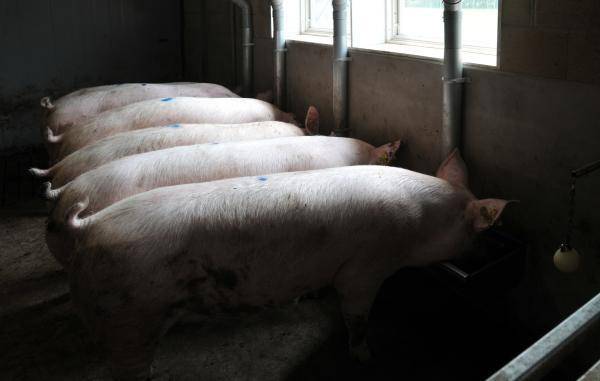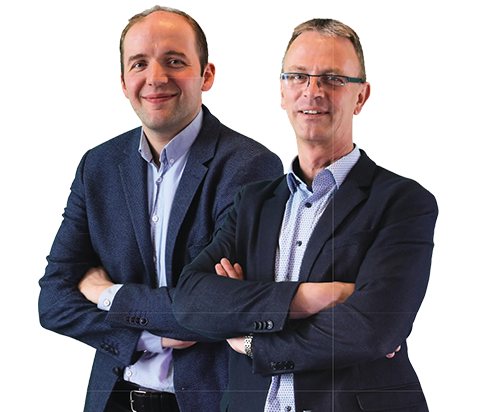Milk was presented as an elixir of life through a variety of slogans: 'Milk is good for everyone. Milk, the white engine, ensures strong bones!' It made sense: milk contains plenty of Calcium (Ca) and Phosphorus (P), which is essential for good skeletal development. Swedish research conducted at the University of Uppsala in 2014 showed different results and even surprised the researchers: milk drinkers suffered more bone fractures! Between the intake and the uptake of Ca and P, other factors are at work as well!
Striving for healthy legs also plays a role in pig farming and crippled animals are a liability for many pig farmers. Lameness can result in prolonged pain in the animals and affects revenue. The animals display reduced mobility and therefore irregular feed uptake, which exacerbates the problem. This multi-factorial disorder requires more than one solution. Slogans like 'Ca and P are good for every pig' are a bit of an empty gesture. This is why Twilmij DSM presents three ways to support healthy legs:
Strong bones
Ca and P are important building blocks of the skeleton. In addition to consumption for maintenance, the deposition of Ca and P determines the requirement per animal per day. Twilmij DSM has worked on an update of the standards for Ca and digestible P (apparent and standardised) in piglets, sows and finisher pigs. These recommendations are available on request.
Absorption of Ca and P depends on many factors. Ca-absorption from the intestine is controlled by the level of 25-OH-vitamin D3 in the blood plasma. In order to increase these levels in the blood plasma, one option is to use a better available source of vitamin D3 in particular Rovimix HyD (25-OH-vitamin D3). In addition, the electrolyte balance and the pH in the stomach can also be considered. The correct choice of the Ca and P source as well as the physical properties can improve the availability of Ca and P for the animal. Furthermore, the use of phytase enables animals to make optimal use of the P present in the feed. The breakdown of phytate improves the availability of minerals, amino acids, and trace elements. Twilmij DSM offers services to determine the phytate and phytase content in final feed. Other important elements for good legs include vitamin K3, magnesium and manganese. Strong legs cannot be seen separate from healthy claws. Think of the use of organically bound trace elements, the vitamin biotin and sulphur-containing amino acids.
Vital muscles
Muscles enable movement and allow animals to reach the feeding trough and eat. Muscles also ensure that animals retain heat. Muscles enable the transport of blood, oxygen and food in animals. Muscles also keep the bones in the right place. There are several factors that can impede the proper functioning of muscles.
As a result of stress or limited blood circulation (reduced oxygen supply), problems with the proper functioning of muscles can also occur. For example, free radicals are formed during the breakdown of nutrients in the body. When too many free radicals are present, oxidative stress occurs. This is harmful to the body and muscles. Vitamin E, as an antioxidant, can neutralise free radicals and, in this way, also protects muscle cells. Other elements related to the action of vitamin E are vitamin C and, among other things, the trace element Selenium.
Flexible joints
Joints ensure that bones can move relative to each other in conjunction with muscles. Joints can sustain damage and Osteochondrosis (OC) is by far the most common cause. OC is a multi-factorial disorder that is associated with the formation of lesions at the level of cartilage in the joints. Housing plays a role, and animals with a high (variable) growth rate are also more likely to encounter problems. Additional influencing factors include genetics, management and health status.
Scientific research also shows a clear link with the vitamin D supply of pigs. This research was conducted at the University of Niigata in Japan, with barrows of 6 to 110 kg (average growth: 726 - 741 g / day). The control ration contained traditional vitamin D3, while in the test feed the vitamin D3 was completely replaced by 25-OH-vitamin D3. When opening the joints, a significant decrease (± halving) in the number of cartilage lesions was noted at the humerus (hipbone) and femur level!
25-OH vitamin D3
Based on its own database of more than 200 blood samples, DSM has established that young finisher pigs with bone issues almost always have a lower level of vitamin D in the blood than healthy pigs. In addition, more than half of all sampled lame pigs scored below the minimum standard of 30 ng of 25-OH-vitamin D3 per ml of blood.
Because vitamin D deficiencies occur particularly in young, fast-growing pigs, it seems useful to start supplementing vitamin D in the form of 25-OH vitamin D3 during the piglet stage (7-23 kg) and the pre-fattening stage (23-50 kg). In this way, the reserves are optimised at a young age.
Finally...
Healthy growth and consuming sufficient amounts of feed has everything to do with the active movement of animals. However, not every problem can be solved with nutrition. Active movement is based on three aspects, the first of which we have already discussed: the animal. The others are absorbable energy and the environment.
Leg-related problems can occur when an animal is greatly troubled by its surroundings and is, therefore, unable to actively move to the feed trough. Infectious causes (Mycoplasma, Streptococcus suis, Arthritis, FMD, Tescho virus) are also often at play. Errors in management can be an additional disruptive factor in this sense. In close consultation with the veterinarian and farm adviser, a treatment plan must be drawn up here.
Twilmij DSM applies its knowledge to feed standards, additives and complementary mixes. For more information, please contact Twilmij DSM's nutritionists.


